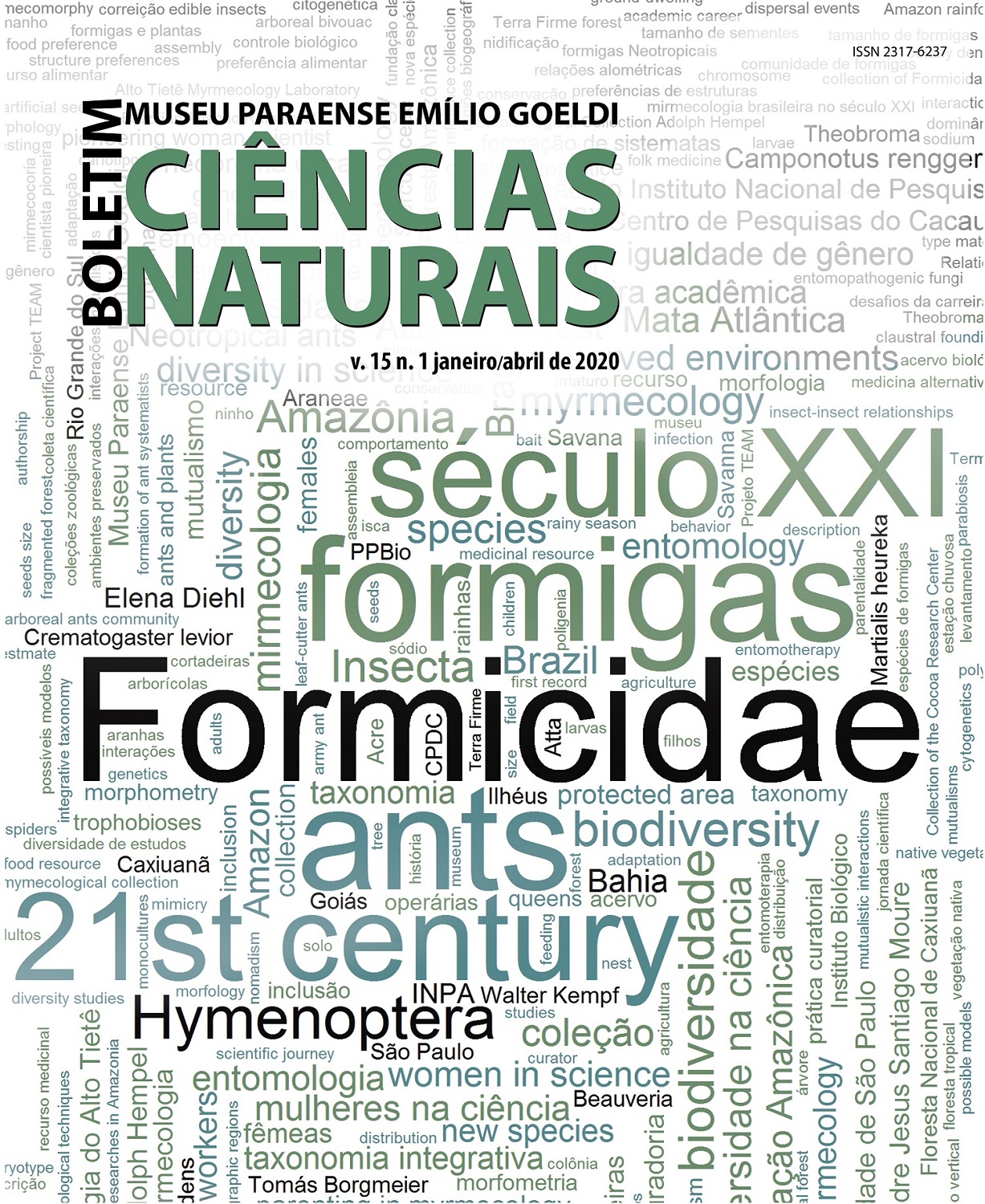Ant diversity studies in Acre: what we know and what we could do to know more?
DOI:
https://doi.org/10.46357/bcnaturais.v15i1.235Keywords:
Amazon, Biodiversity, Distribution, FormicidaeAbstract
Brazil counts with one the largest ant diversity in the world. But, given its continental dimension and uneven scientific development process, there are still several gaps in the knowledge of this biodiversity. This fully applies to research on ant diversity in the state of Acre, southwestern Brazilian Amazon. Since 2014, in Acre, ants are being sampled by Rede BIA project, which aims to cover this gap. Thus, our main goal is to present the status of ant diversity studies in Acre regarding their progress and their contribution to the ant fauna knowledge, based on scientific papers and grey literature. We found 17 studies to Acre, which encompass a time range of 10 years, and a total of 338 species recorded. The studies are concentrated mainly in the southern and eastern parts of the state. Ground pitfall trap is the most used sampling technique. We point out that adding more sites to Rede BIA’s collecting efforts, plus focusing samplings in poorly studied habitats and ecosystems, especially in the western and eastern parts of the state will provide a lot of new data on ant species occurrence to Acre and to Brazil.
Downloads
Published
Issue
Section
License
Publication means fully assigning and transferring all copyrights of the manuscript to the journal. The Liability Statement and
Assignment of Copyrights will be enclosed with the notice of acceptance. All the authors must sign the document and return it to the journal.








